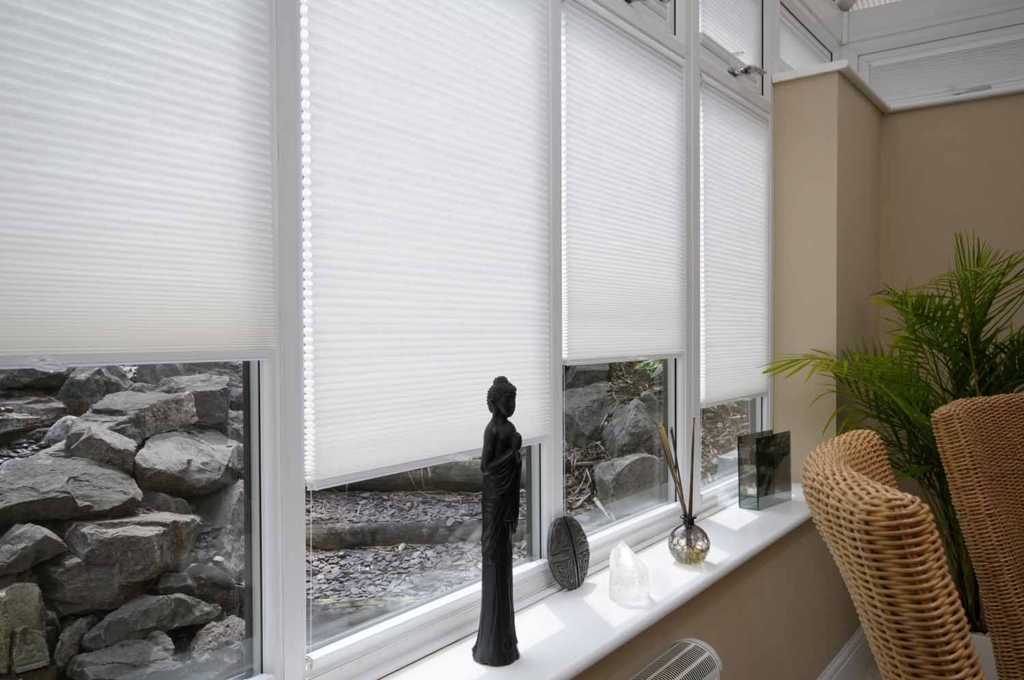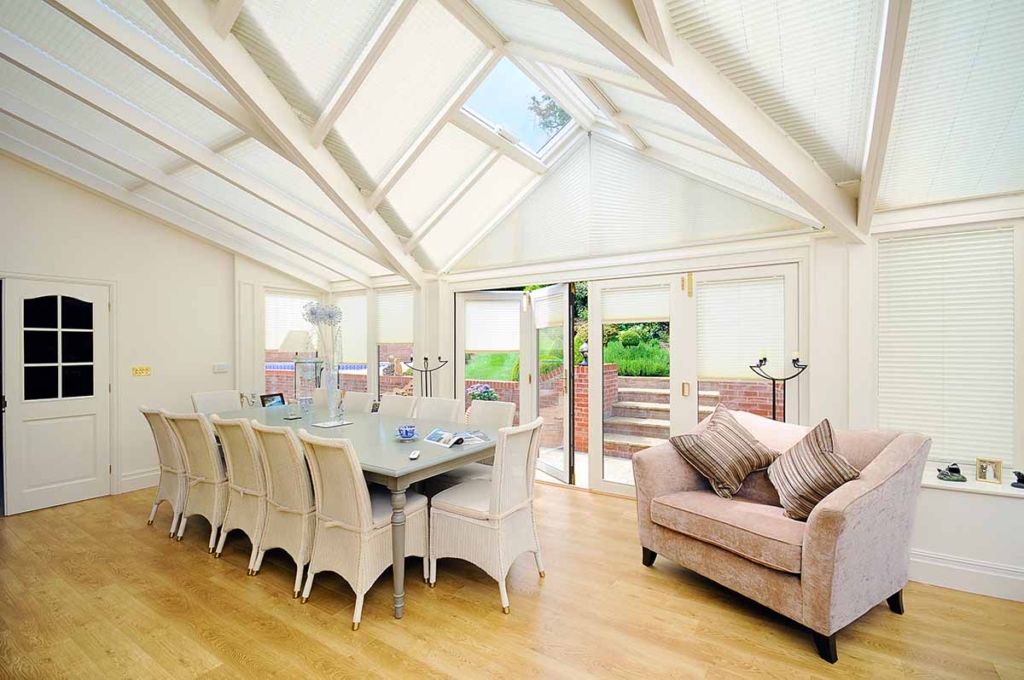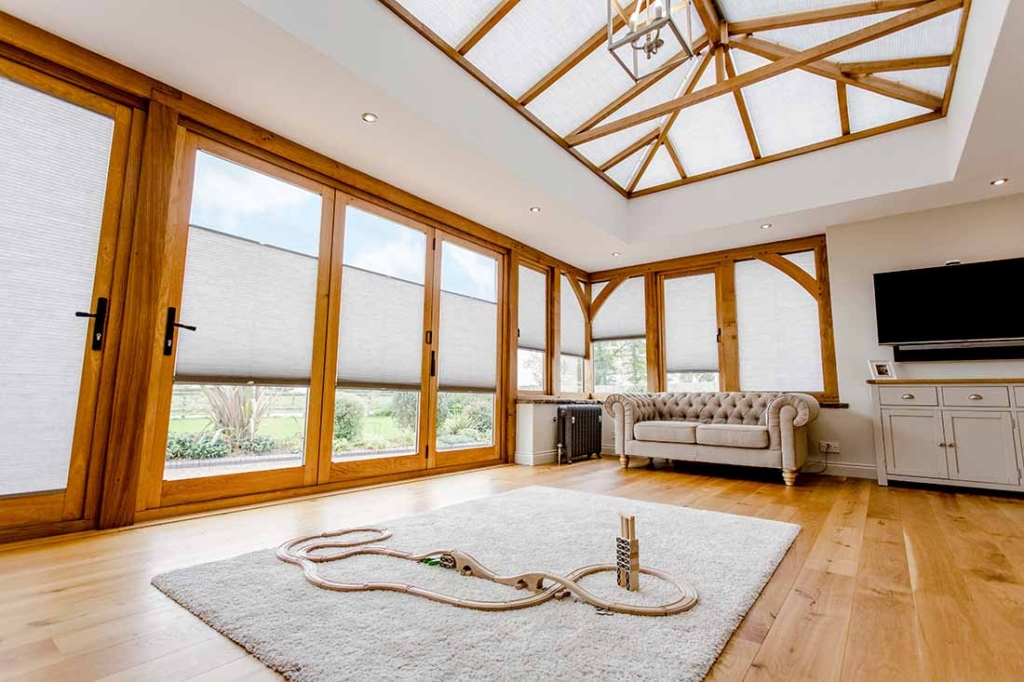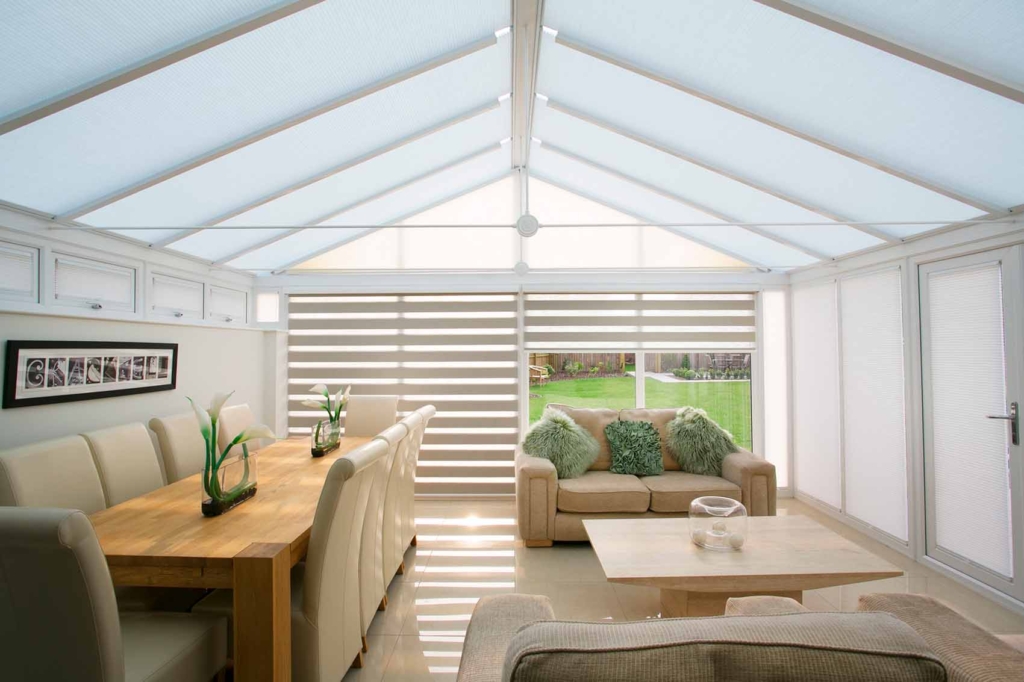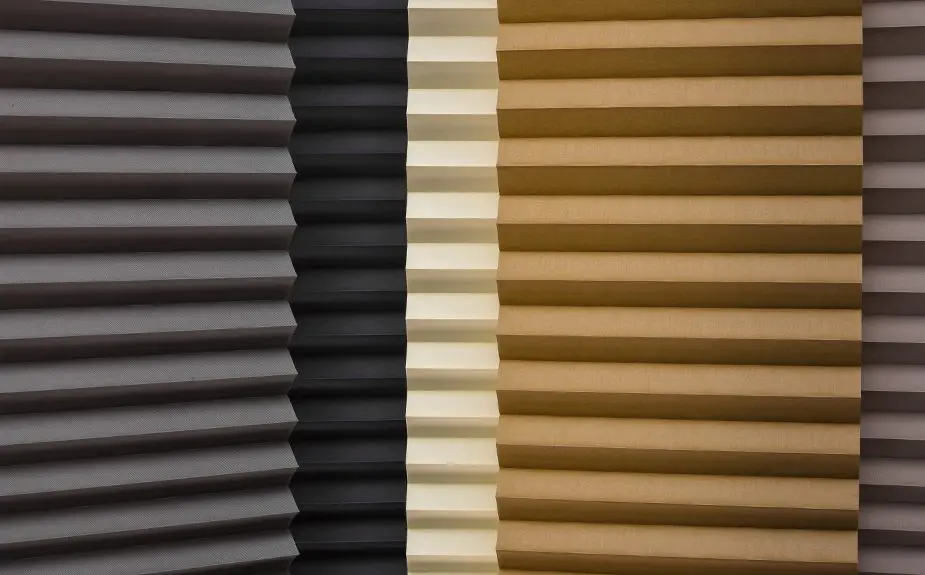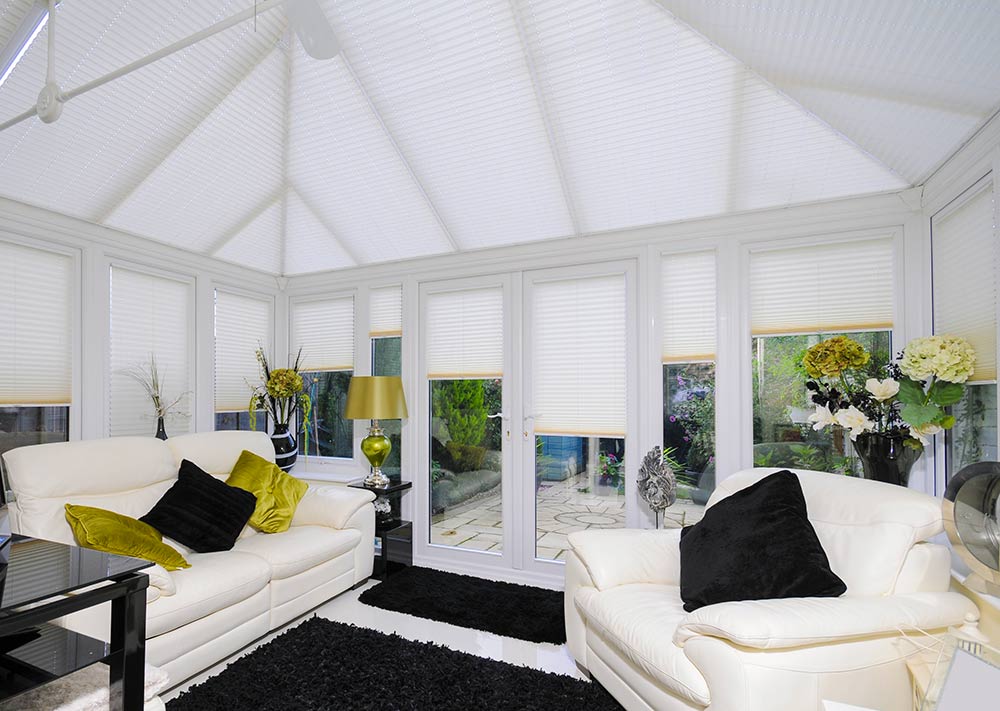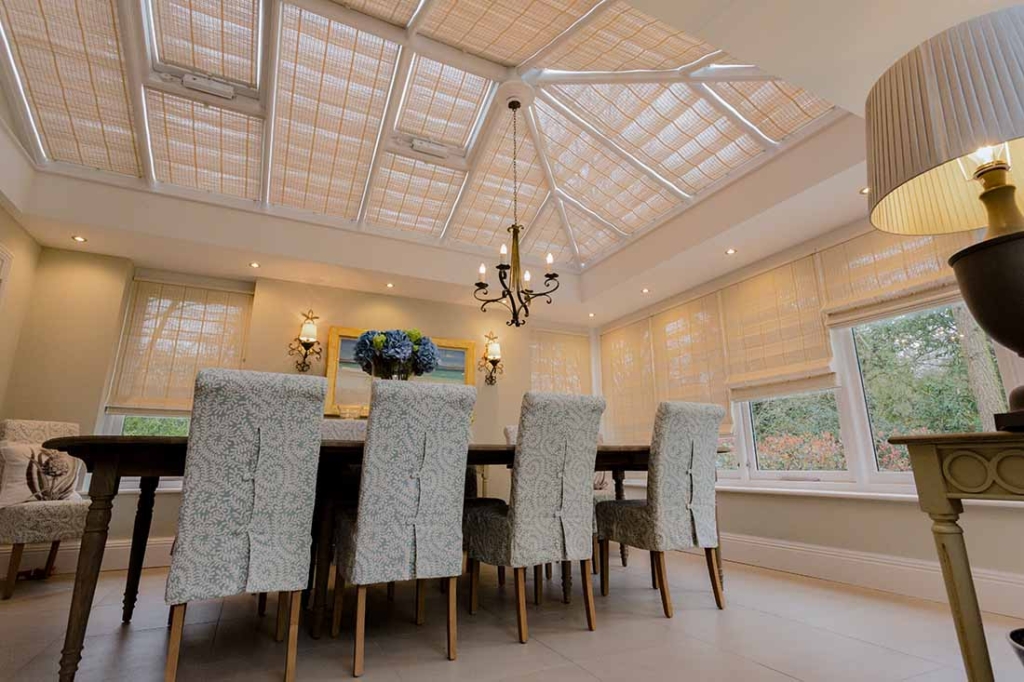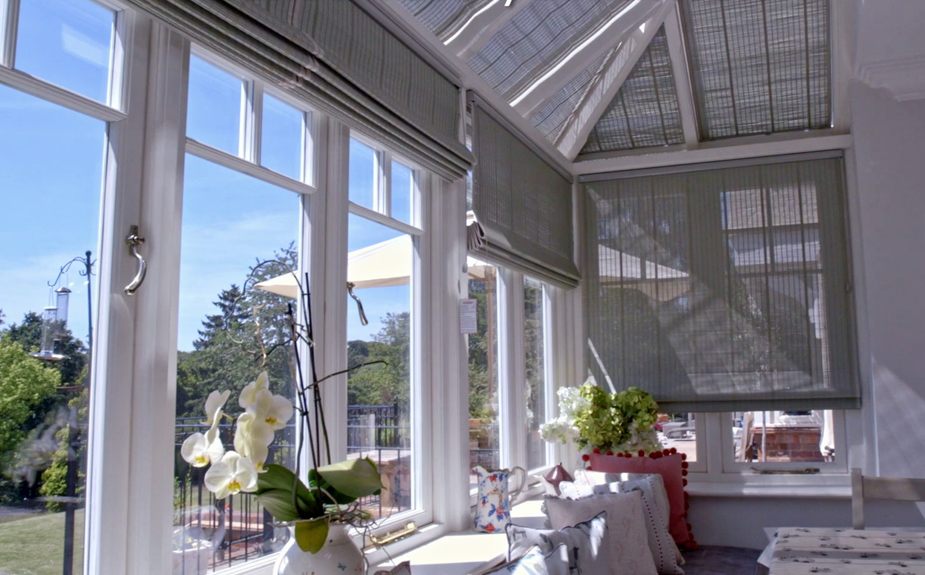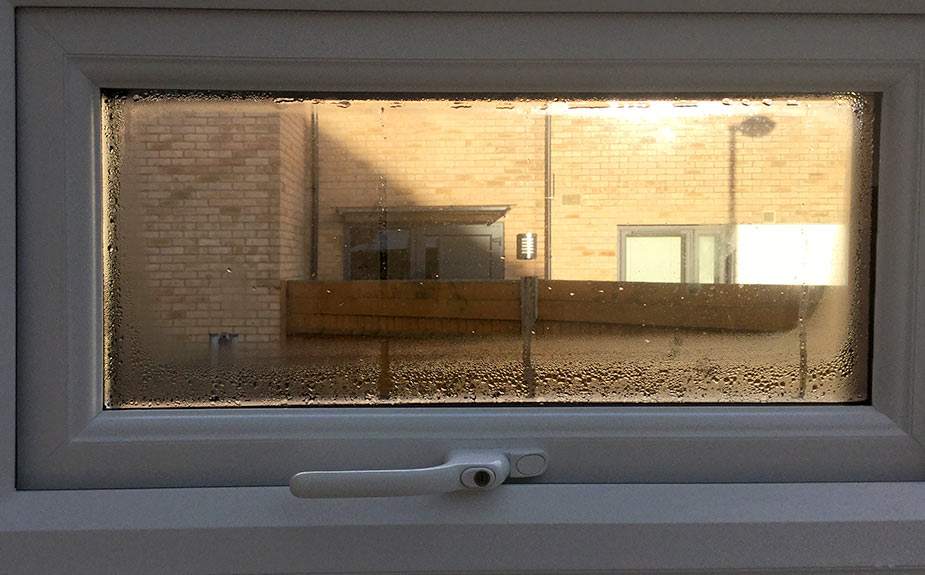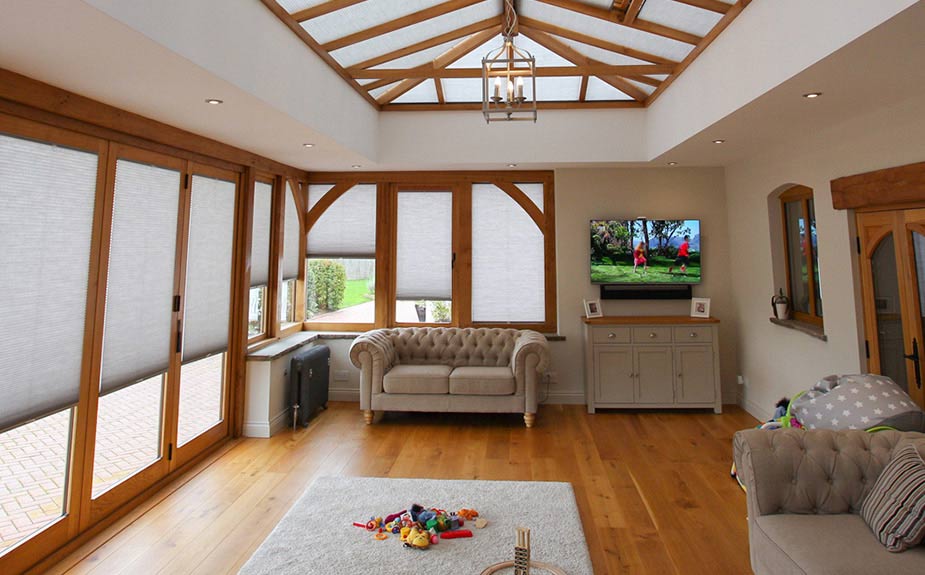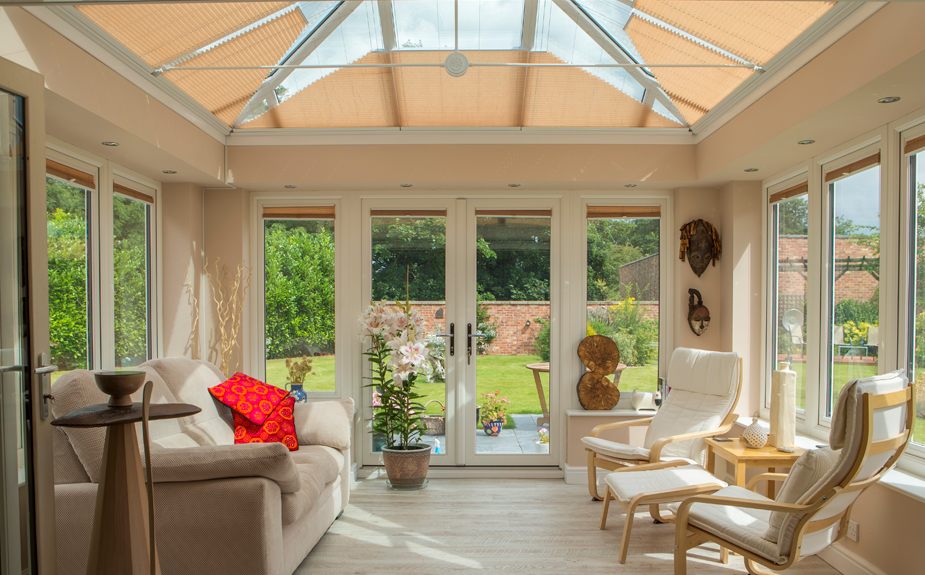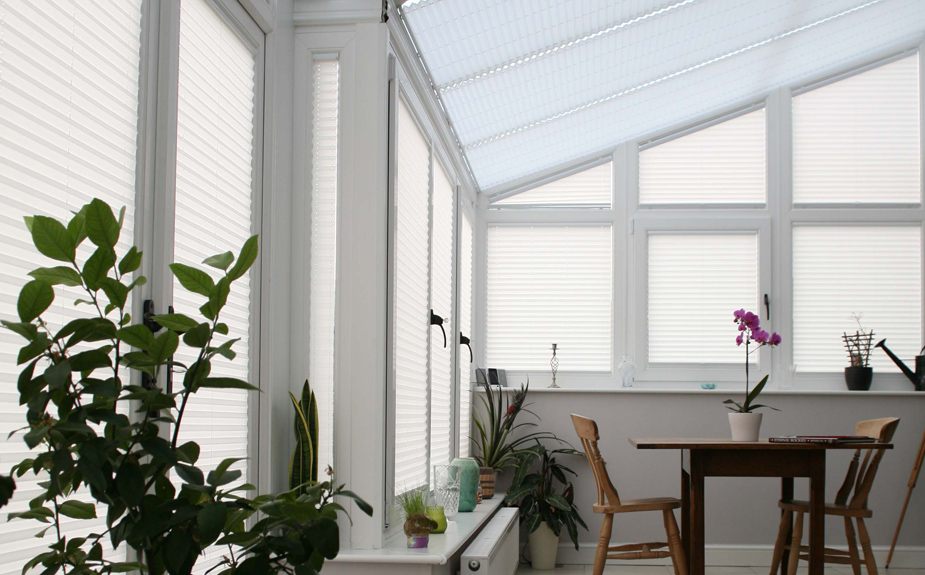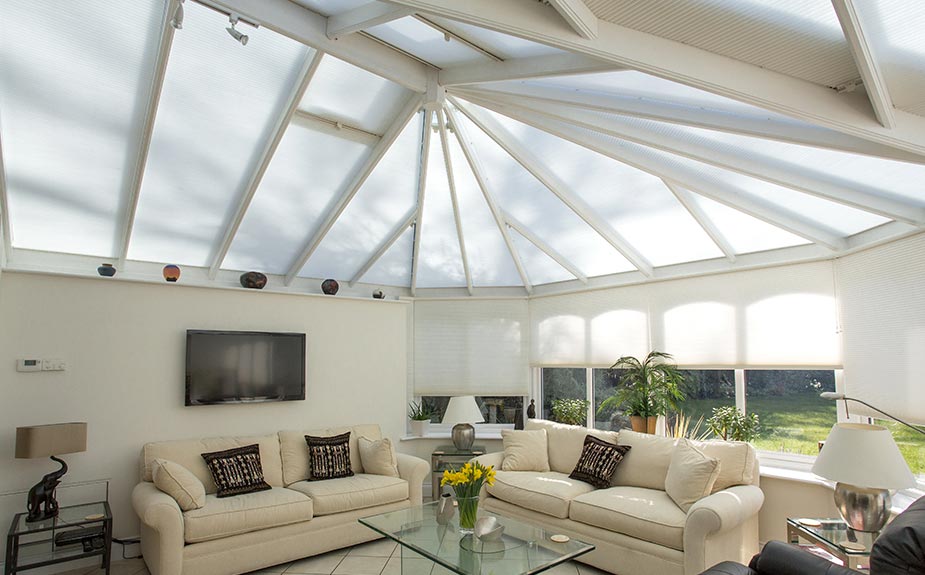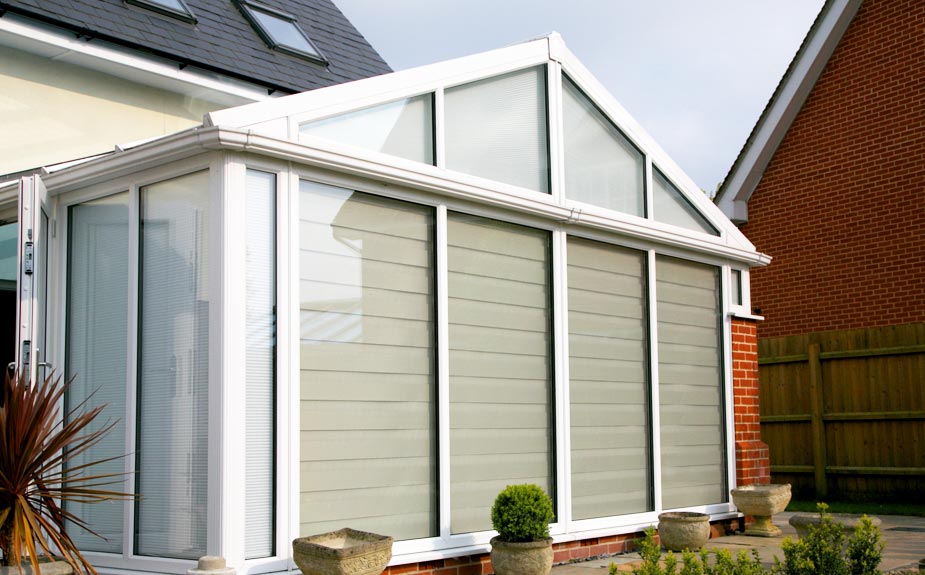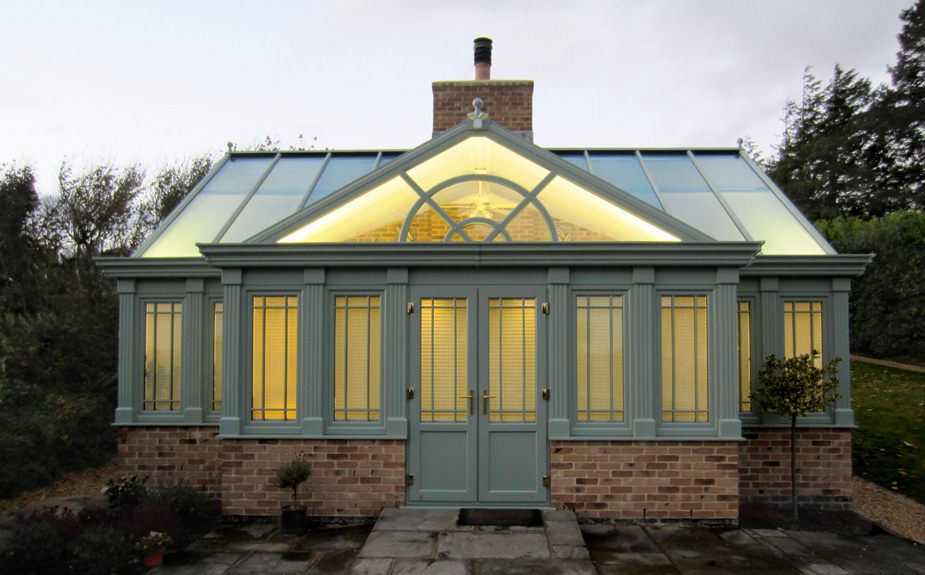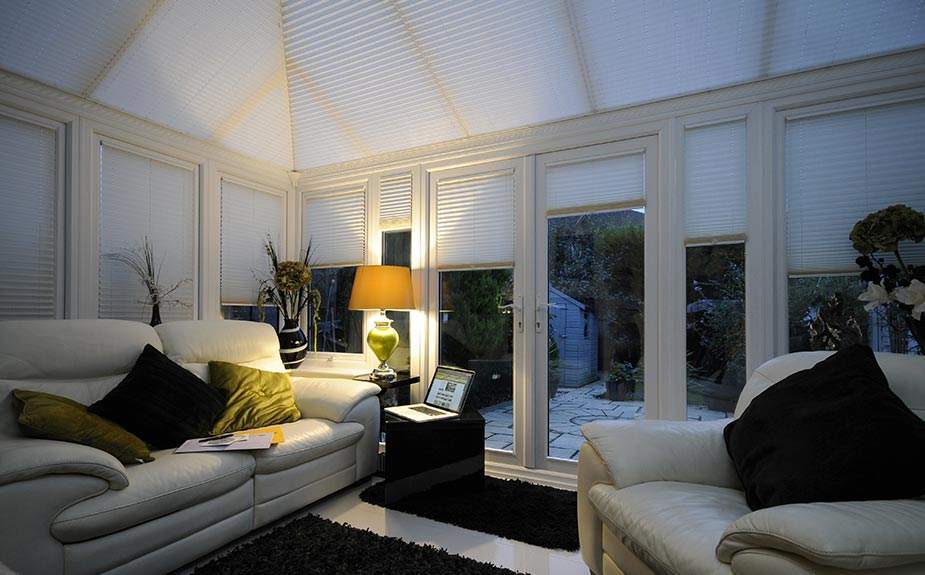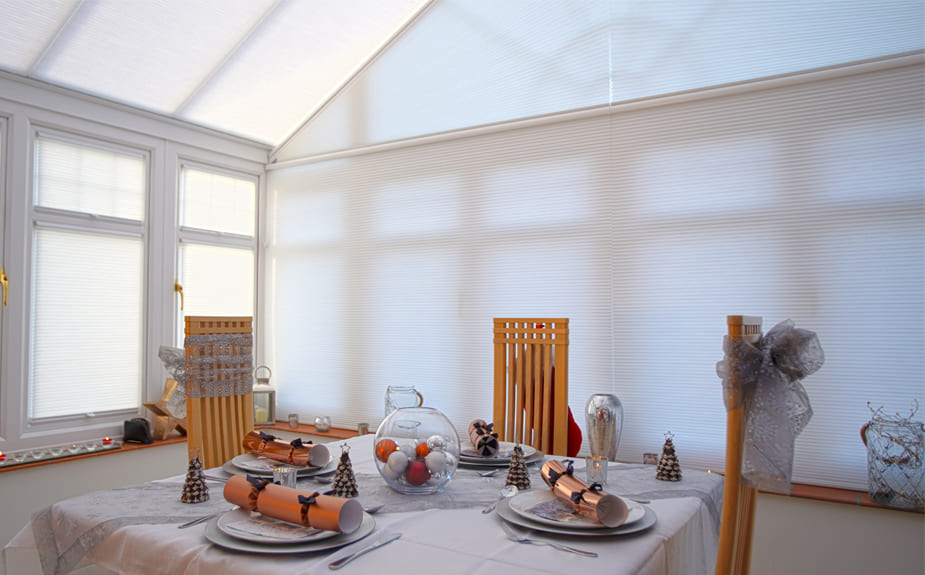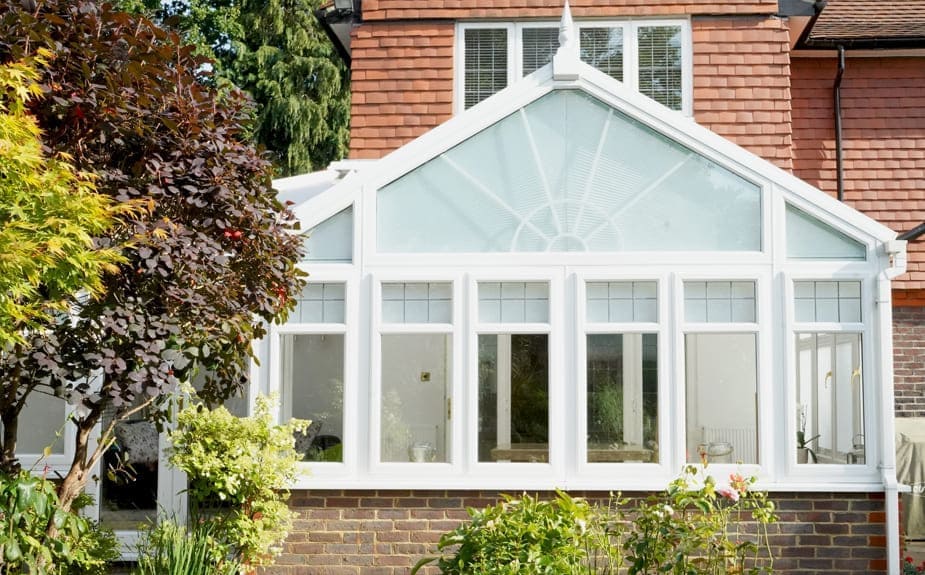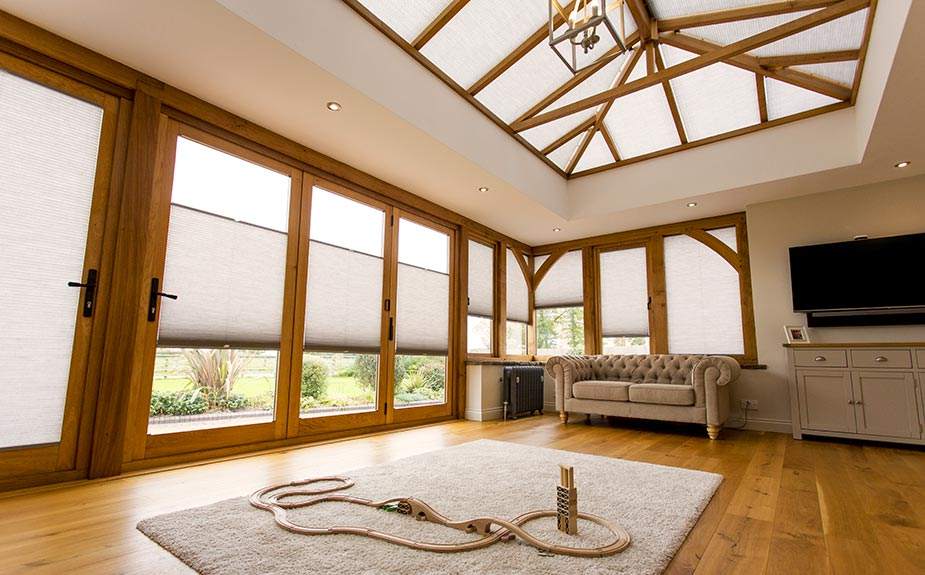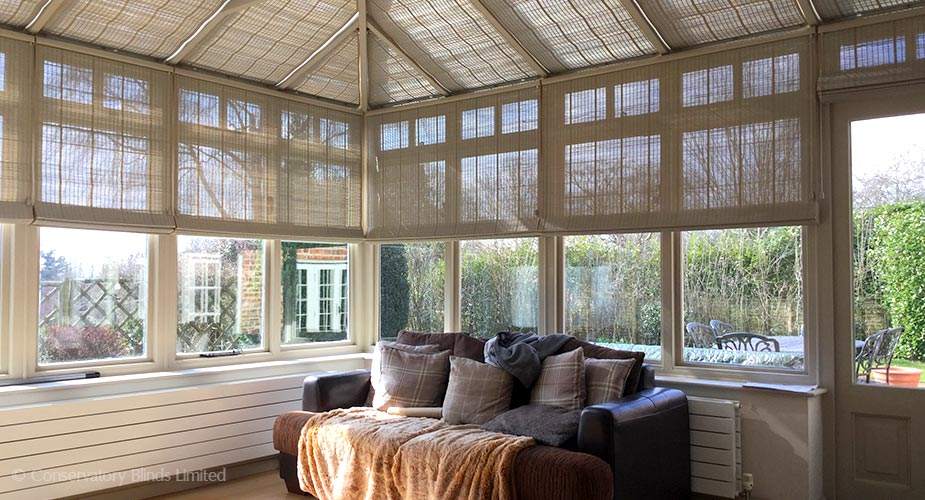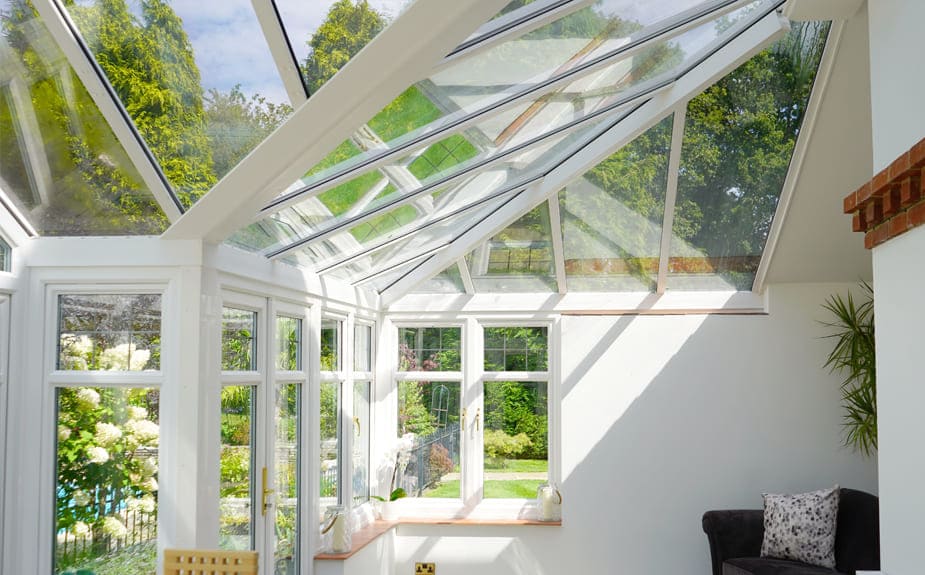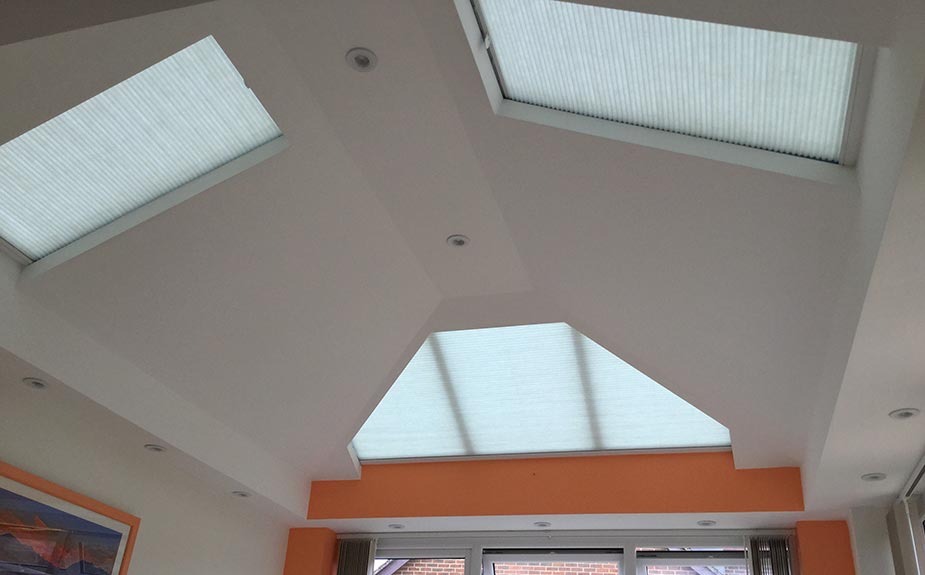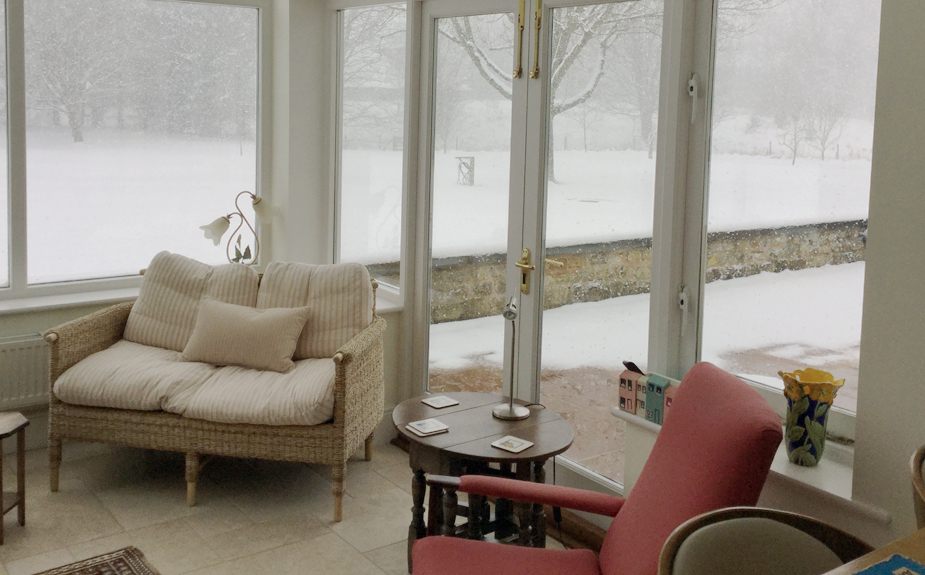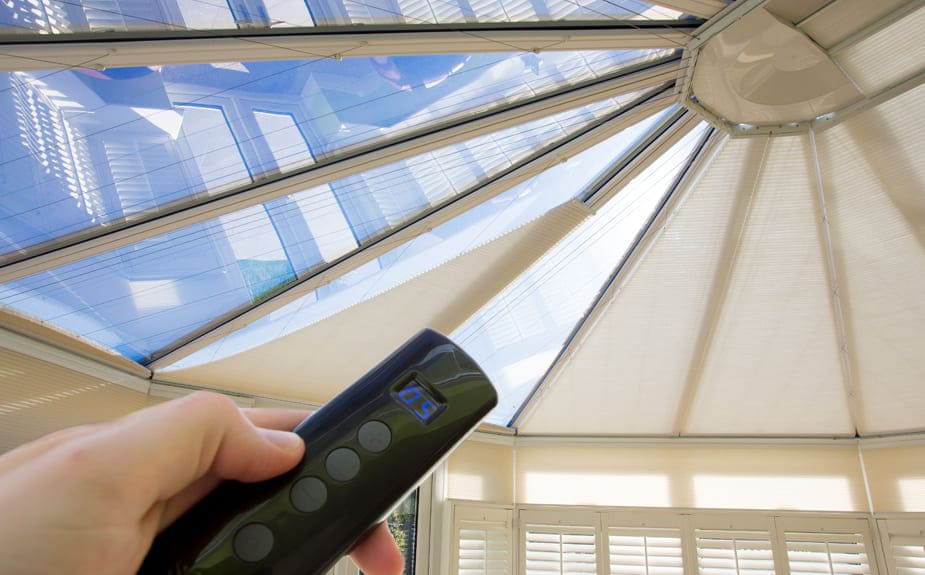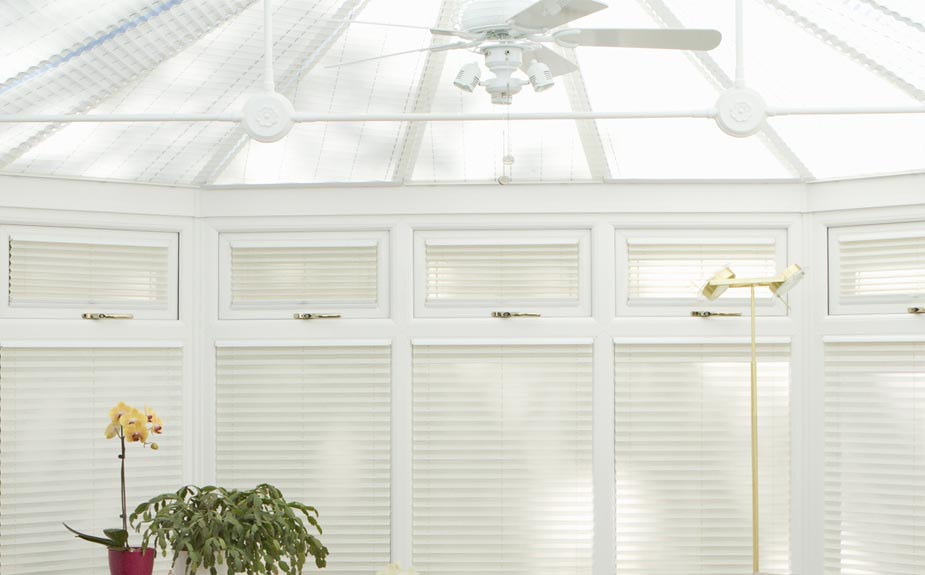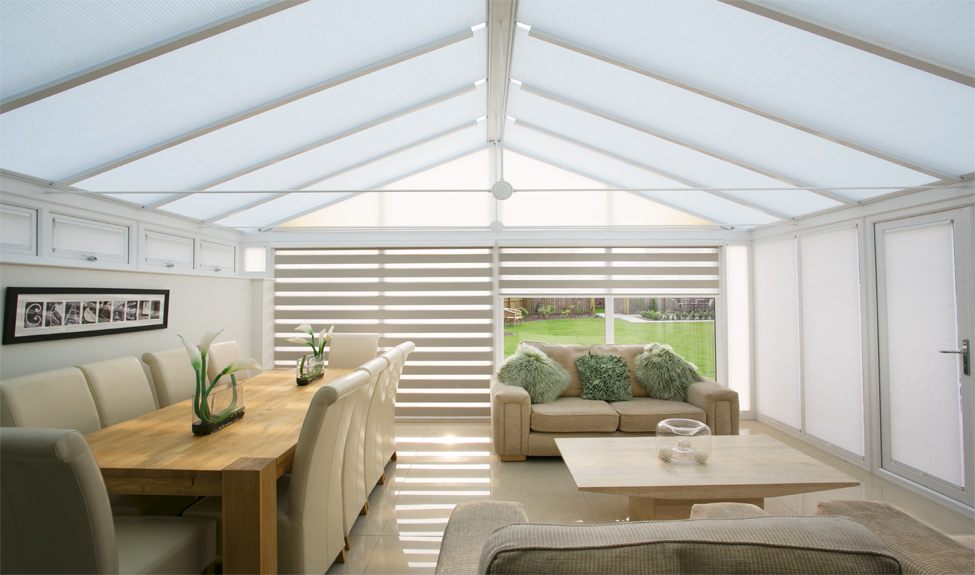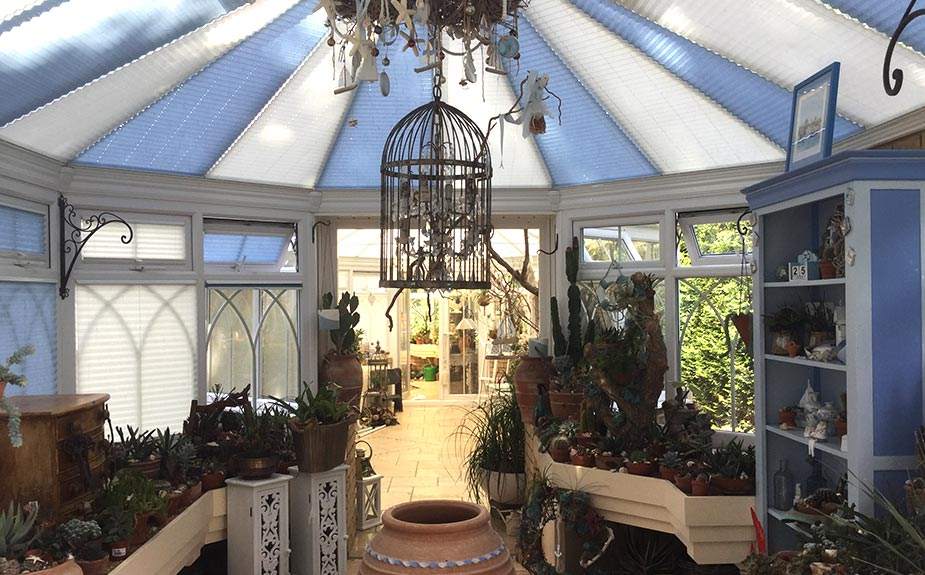At Conservatory Blinds Limited, many customer come to us explaining their conservatory is too warm in the summer months. But, most methods aimed at keeping a conservatory cool; focus on blocking out the light entirely before it even enters the roof. But, with so many methods available, what are the differences between them. And how do they compare to conservatory roof blinds at reducing the heat?
External Roof Blinds
Pros: Fitted to the outside of a conservatory roof, external blinds block the sun before it enters the conservatory. This significantly reduces heat and UV, and provides privacy when extended.
Cons: External blinds need to be motorised and are only available for rectangular conservatories. However, only with sufficient access to the roof and with suitably constructed sides. They require a wind sensor to close the blinds when it is windy. They also cannot stop low sun creeping in underneath the blinds at certain times. External blinds darken the conservatory and adjoining rooms; still leaving the room all-glass internally. This means it still suffers from noise reverberation and significant heat loss.
Cost: Similar or more expensive than conservatory roof blinds
Solar Film
Pros: When used with conservatory blinds, translucent solar reflective film is very effective. Like external blinds, it helps to reduce heat and UV transmission; by blocking them from coming in. They can also use solar film in any shape conservatory and is cheap by comparison.
Cons: Solar film is only available on certain types of glass and will tint all light entering the conservatory. For sufficient light to be allowed in to not darken the room, you can only use a relatively light-grade film. Again, just like external blinds, solar film gets installed externally so you gain no extra privacy. Yet still suffer from noise reverberation and heat loss remains a major problem.
Cost: Cheaper than conservatory roof blinds, requiring much less time and no specialist skills
Solar Inserts
Pros: Cheap to buy and self-fit in many polycarbonate roofs; yet effective in reducing light, UV and heat, whilst also providing a level of privacy.
Cons: It can only be used on clear or light-tinted polycarbonate roofs (not white or Ultralite type roofs). This is where you can gain access to the eaves and expose the open cells of the roof. Even when fitted it does not address the issues of noise reverberation or heat loss making your conservatory too warm.
Cost: Extremely cheap and designed for DIY, as it requires no experience, skills or tools
Insulated Roof Panels
Pros: By under-cladding the glass roof with polystyrene-backed plasterboard you significantly cut down heat loss; but also stop all solar heat gain, UV and light, whilst also providing privacy.
Cons: Obviously fitting polystyrene-backed plasterboard to the underside of a glass roof has a serious negative impact; its appearance and will clearly darken your conservatory and adjoining room as well. It is a messy installation with decoration issues that subsequently arise. But, the room can also suffer from interstitial condensation (water condensing in the polystyrene). It’s major drawback, is that it is still nowhere near as effective as having a correctly constructed roof in the first place.
Cost: Similar to conservatory blinds, or slightly cheaper (depending on the builder)
Conservatory Roof Replacement
Pros: Replacing a glass roof with a traditional roof that is correctly constructed and insulated will always provide the best solution to insulation.
Cons: Only orangeries or traditionally built structures can support a traditional roof. Most conservatories cannot have their roofs replaced with anything other than a semi-solid insulated roof. A traditional roof will, like most other options, darken the conservatory and adjoining room. This also removes the main reason why people have a conservatory; the unique light and airy atmosphere that it creates.
Cost: Very high indeed
The main difference between conservatory roof blinds and the other options mentioned is that they are actually designed for their intended purpose. This means the end result is much more aesthetically pleasing.
With blinds you have a large variety of styles, fabrics and colours that let you get the exact blinds that will fit in with your existing décor. Depending on the type of blinds you have, they can block up to 85% of the heat from entering your conservatory.
Conservatory roof blinds also have one other feature that none of the others have – flexibility. As the blinds can be extended or retracted, you can decide exactly how much light to let into your conservatory. The blinds themselves still let up to 50% of natural light through, meaning that glare is reduced, but the natural atmosphere of the conservatory is retained.
Is your conservatory too warm? Find the best way to keep it cool by arranging a free quotation with a member of our sales team.


